Manual Whirlpool BI WDWG 861484 UK Washer-Dryer
Need a manual for your Whirlpool BI WDWG 861484 UK Washer-Dryer? Below you can view and download the PDF manual for free in English. This product currently has 5 frequently asked questions, 0 comments and has 0 votes. If this is not the manual you want, please contact us.
Is your product defective and the manual offers no solution? Go to a Repair Café for free repair services.
Manual
Loading…

Loading…
Rating
Let us know what you think about the Whirlpool BI WDWG 861484 UK Washer-Dryer by leaving a product rating. Want to share your experiences with this product or ask a question? Please leave a comment at the bottom of the page.More about this manual
We understand that it’s nice to have a paper manual for your Whirlpool BI WDWG 861484 UK Washer-Dryer. You can always download the manual from our website and print it yourself. If you would like to have an original manual, we recommend you contact Whirlpool. They might be able to provide an original manual. Are you looking for the manual of your Whirlpool BI WDWG 861484 UK Washer-Dryer in a different language? Choose your preferred language on our homepage and search for the model number to see if we have it available.
Specifications
| Brand | Whirlpool |
| Model | BI WDWG 861484 UK |
| Category | Washer-Dryers |
| File type | |
| File size | 1.14 MB |
All manuals for Whirlpool Washer-Dryers
More manuals of Washer-Dryers
Frequently Asked Questions about Whirlpool BI WDWG 861484 UK Washer-Dryer
Our support team searches for useful product information and answers to frequently asked questions. If you find an inaccuracy in our frequently asked questions, please let us know by using our contact form.
My washer-dryer makes a lot of noice and/or vibrates loudly, what can I do about that? Verified
It's possible that the washer-dryer has not been leveled. You can do this by adjusting the feet to make it perfectly level. The problem can also be caused by inserting to much clothes in the machine. If these are not the cause of your problem you should contact the manufacturer.
This was helpful (1313) Read moreWhat does '6th Sense' mean? Verified
Whirlpool appliances that are equipped with 6th Sense technology have sensors that ensure optimal operation of the machine. For example in dryers, these sensors measure the moisture left in the wash and stops the machine when everything is completely dry.
This was helpful (794) Read moreMy washer-dryer smells, what can I do about it? Verified
There are washer-dryers with self-cleaning features. If these features are not available it's possible to add 100ml of white vinegar or 100gr of soda crystals and have the washer-dryer run a 90 ℃ program.
This was helpful (608) Read moreWhat is the difference in usage between a washer-dryer and a separate washing machine and dryer? Verified
The biggest advantage of a washer-dryer is that it takes less space. However, a separate dryer will be able to dry more than a washer-dryer. A washer-dryer also uses relatively more energy and requires more time.
This was helpful (347) Read moreCan I connect a washer-dryer to an extension cord? Verified
Appliances that require large amounts of power, like a washer-dryer, can not be connected to all extension cords. See what the power usage of the washer-dryer is, which is indicated in Watt, and check if the extension cord can handle this. There are extension cords with thicker cables that are made to handle larger appliances.
This was helpful (296) Read more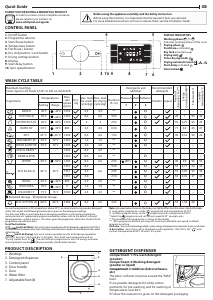


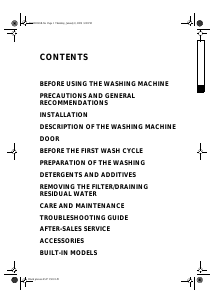
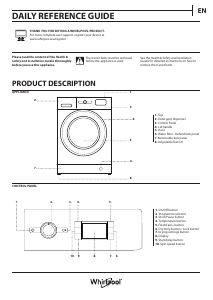
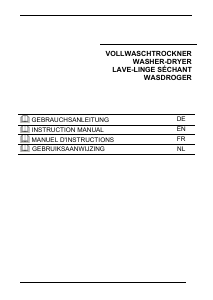
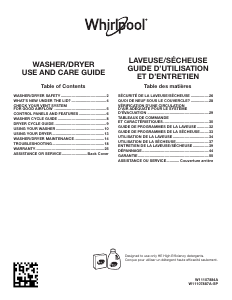
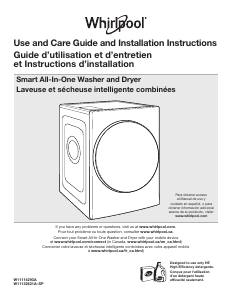
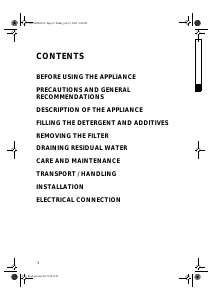
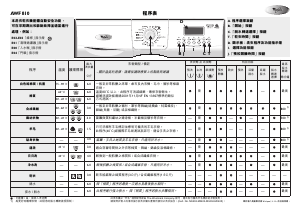

Join the conversation about this product
Here you can share what you think about the Whirlpool BI WDWG 861484 UK Washer-Dryer. If you have a question, first carefully read the manual. Requesting a manual can be done by using our contact form.